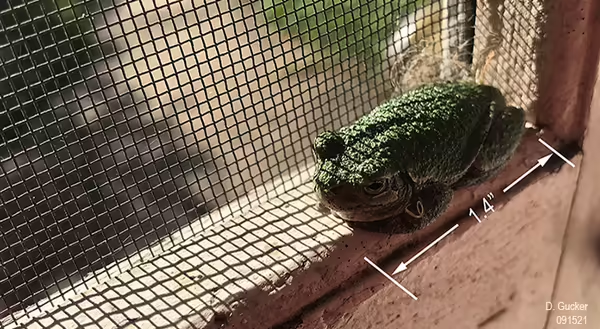
I have been noticing tree frogs for the past month and a half. First, I saw a green one back in September on the porch door and then several on the kitchen window in the evening. This past Sunday, I noticed a gray tree frog sitting inside a storage shed. Locally, I have heard reports of people seeing numbers of them on the side of their houses.
As I have learned, the gray tree frogs come in many colors and they range in size from 1.25 - 2.5 inches in length. The juvenile gray tree frog is bright green, this is what I saw in September. Adults can be lime green to light gray to brown and any variation in between. To add to the confusion, individual frogs may change color depending on the temperature and the background. All treefrogs have adhesive pads on their toes, so they can cling to trees, leaves, stems, windows, siding, etc.
There are two species of gray treefrogs, Cope’s Gray Tree frog (Hyla chrysoscelis), and Gray Tree frog (Hyla versicolor). They make up the gray tree frog complex. Both species are identical in appearance and can only be distinguished by their chromosome numbers and mating call. Gray treefrogs are common throughout Illinois and live in moist wooded areas - large and small.
Tree frogs start their life in the water as tadpoles. After two months, they transform into frogs that can live on land. The diet of this frog consists of small insects, spiders, and other invertebrates.
Frogs are considered bioindicators of the quality of an ecosystem. Since frogs have thin, permeable skin and spend a part of their life in water, this makes them good bioindicators of an ecosystem's health. If you have frogs, then you have a pretty good ecosystem in that area.